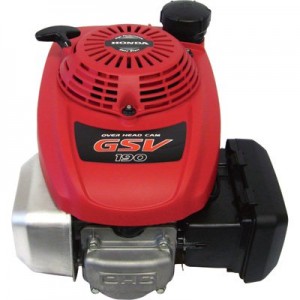Drive shaft orientation is one of the most misunderstood aspects of small engines, leading to a lot of fallacies about the advantages and disadvantages of each design. How do you know which one you own? Does one design last more than the other? Is there a reason you should choose a vertical shaft engine over a horizontal shaft or vice versa? Here’s what you need to know to separate fact from fiction.
Model Designations
All Honda engine model names start with two letters to designate their engine family. Currently, this includes the GX and GC. If there’s a “V” after these two letters, the engine has a vertical shaft. Engines that are the same model family and displacement share the same basic design and provide identical performance no matter how the shaft is oriented.
Engine Wear and Lubrication
Myths are persistent about one design wearing out faster than the other, but these can be attributed to a misunderstanding about how these engines work.
Some older vertical shaft engines have the intake and exhaust valves positioned vertically. This draws hot exhaust gases along the bottom cylinder surface, resulting in slightly more wear on that side.
This has led people into believing that gravity is a factor, leading to increased wear on vertical shaft engines, but the same wear pattern is found around the exhaust no matter where the valve is positioned.
On the other hand, some people believe that horizontal shaft engines will wear out faster because the upright position of the cylinders keeps them from being lubricated as well as a vertical shaft engine. Both horizontal and vertical engines with splash lubrication use a dipper or scoop to pick up oil in the crankcase and fling it onto the components inside the engine. Even at idle, oil is being flung around the engine at a rate of 20-30 times per second, overcoming any issues with gravity by sheer force. Likewise, while the oil channel location may be a little different, pressurized oiling systems still pump oil up to the head and let it flow back to the crankcase in both engine designs.
Driving Equipment
When engineers choose an engine, they decide on crankshaft orientation based on what makes the most sense to power the equipment. For example, the blade can be bolted directly to the drive shaft on a vertical shaft engine when used in a walk-behind mower, while a horizontal shaft is perfect for the pulley system used on an edger or the impeller in a water pump.
The only time you’ll likely have a choice between vertical and horizontal shaft engines is when you buy a riding mower. Some ZTR manufacturers choose to use horizontal shaft engines to reduce the overall length of the mower, while some older lawn tractors including several of Honda’s own models use a horizontal shaft engine to connect with the axle using a shaft drive. To connect the horizontal shaft to a vertically-oriented pulley, these mowers use a mule drive. This guides the belt along a pair of pulleys, bending them at a 90-degree angle. These added bends are more efficient and reliable than they sound, but they do complicate belt replacement.
Blurring the Line: Mini 4 Stroke Engines
The GX25 and GX35 are technically vertical shaft engines, but their oiling system is designed to work at any angle. This lets them be used in place of two-stroke engines in handheld devices like string trimmers. These engines also find use in stationary equipment, mounted either horizontally, as seen in Honda’s own WX10 water pump, or vertically to power small augers.
Get Everything You Need for Your Honda Engine
No matter how your engine is built or what it’s powering, you can get the parts you need for it from www.hondalawnparts.com. We’re a certified dealer for Honda Engines and Honda Power Equipment so we can ship the OEM parts and accessories across the U.S. and Canada. Need help finding a part? Our site can show you factory parts diagrams and descriptions for your specific model so you know what you’re ordering will fit.

